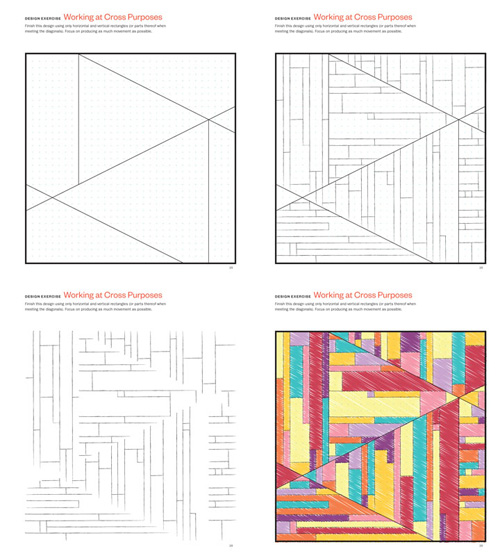I love design. I believe in it and its power to say important things, its ability, in ways both small and large, to change the world. That may sound strange coming from someone with a reputation for skepticism, but there it is. In my world, design matters. Shapes and forms, colors and relationships, these are more than just pretty things; they are the vocabulary for expression, they speak in ways words never can. In truth I am less a designer and more of a design geek; it is my study of and commitment to the possibilities that design holds that drives my practice as a designer.
That said my practice as a designer involves an incredible amount of play, working with shapes and relationships until things begin to click, until a visual vocabulary starts to match up with the ideas dancing around my mind. And then the serious designing really begins. That isn’t to say that the play is not an essential part of the process for me; it enables me to figure out the essential structures of a quilt, the aesthetic vocabulary that will best serve to translate the ideas at hand. That is why I included the 42 design experiments in The Quilt Design Coloring Workbook; they offer spaces and prompts for exploring that process of play, the finding of new and individual vocabularies for designing quilts.
Each of the design exercises provides a basic framework for exploration, guidelines for actions and decisions. They straddle a line between improvisation and structure, that space that gives rise to the most interesting design. In setting up the elementary principles for each design the overwhelming problem of how to start a design is bypassed, allowing you to jump right into the play. As with the coloring exercises there is no wrong way to complete the designs, just myriad possibilities.
Yet they are not just fill in the blanks; the prompts are not about limiting the options. Instead they focus in on an arena of design exploration. In essence they are questions to which I do not know the specific answers. Of course I have played with each and every one of the 42 design prompts, seen where they might go, but those are only my answers and they are no more correct than any other. I’ve just put my 25 years of experience to work to help kickstart your own play with quilt design, play that I hope to infuse with the ideas, principles, and possibilities found within the vast vocabulary of modern art.
I intend these design explorations to be played with alongside the coloring play in the finished quilt designs; they are an extension of the process, pulling in a next iteration of questions that transforms the pleasure of playing with color and shape into experience that enhances your creative practices, whatever they might be.
But these are not simply design exercises limited to adding and subtracting lines and shapes; once the design is finished, the possibilities made manifest, each of these 42 design prompts becomes a new coloring experiment, adding to the 49 quilts I included for coloring. At the most basic level I saw that as a wonderful way to add more coloring to the book while making each copy of the book unique, as individual as the readers (and designers and colorers). Each copy of The Quilt Design Coloring Workbook starts off the same, identical, but as the coloring exercises are filled in, as the design prompts are played with and brought to life, each copy becomes profoundly and beautifully idiosyncratic. If I were somehow able to bring all the books together after you all play with them I would have a collection of quilts as diverse and individual as the creative universe I am lucky enough to be a part of.
More later,
-t









